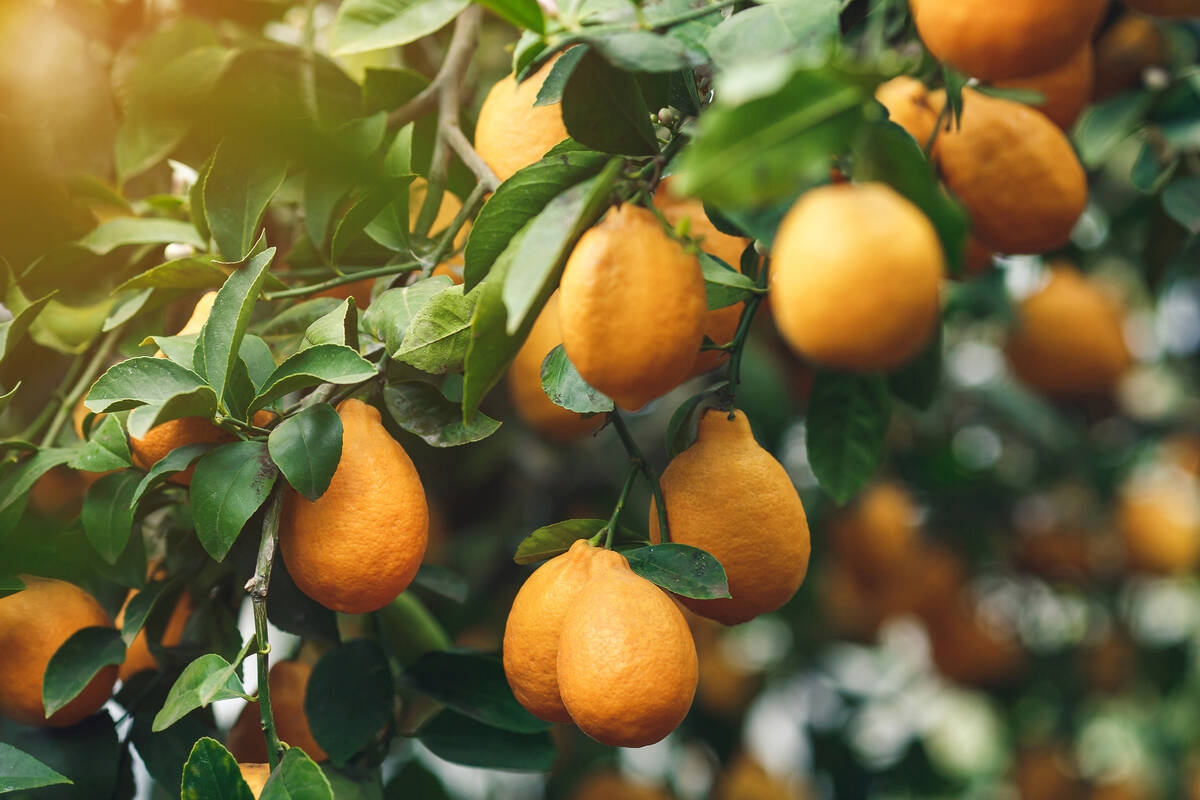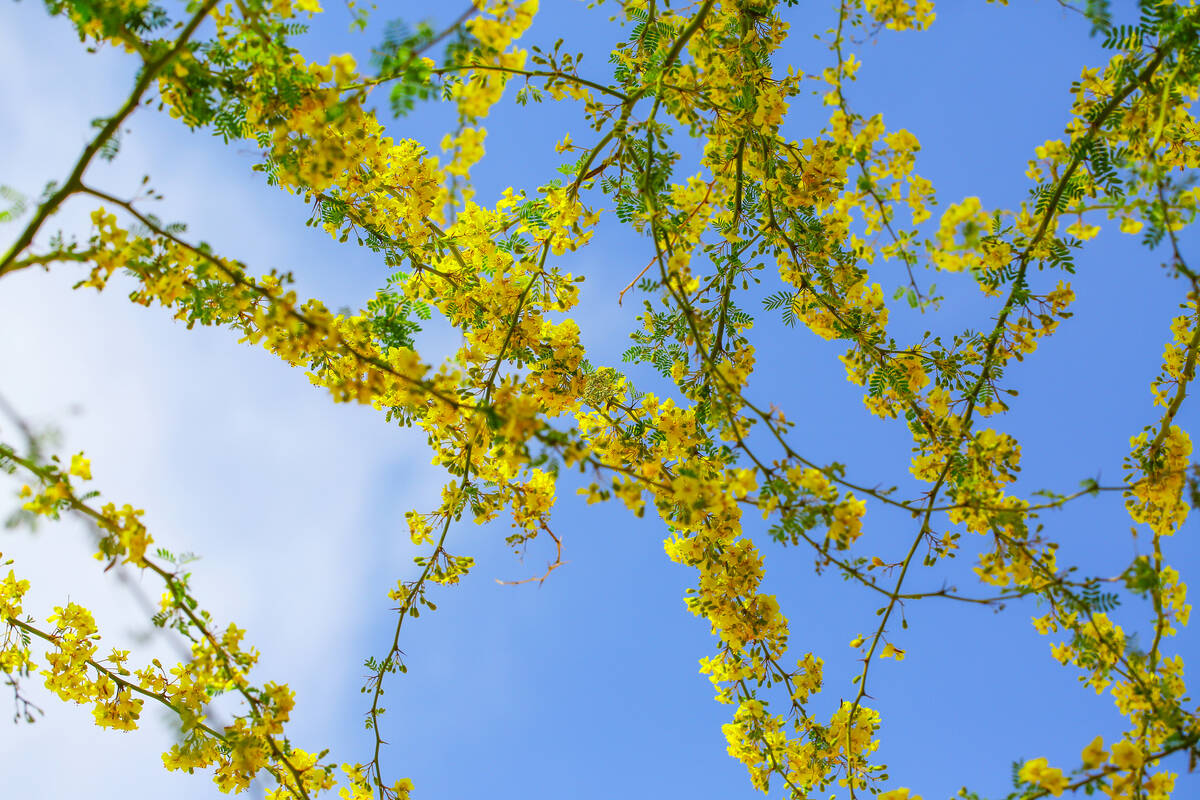What time of year is best for planting Meyer lemon tree?
Q: I have a Meyer lemon plant in my house waiting for the temperature to cool down. I am using grow lights. When can I plant again?
A: It depends on your Meyer lemon’s size, health and the surrounding temperature. Usually that means waiting until fall (October) or spring (late January). Of course, those in the business of planting will tell you, “Any time of year is good to plant.”
For your information, depending on the plant and the size of its stems, plants can continue to grow without extra light. If your plants are large, healthy and receive enough light, they store extra food in the thickness of their stems or branches.
For some large indoor plants, they might store enough food to last three or four months under low light conditions if they are surrounded by cooler temperatures. Of course, that extra food is used up quickly under higher temperatures.
Q: A couple months ago I saw this 5-20-5 fertilizer and thought I would give it a try. This stuff works a week after application and lasts about three weeks. This makes me wonder how the soil affects these chemical fertilizers and how plants obtain their benefits. My west-facing Arabian jasmine are doing better than they should be.
A: I have a theory: Plants in better health can withstand more adverse conditions than ones in poorer health. I also believe that some fertilizer contains organics that are beneficial for most plants growing in the desert versus our unamended soil. But your fertilizer appears to have no soil organics in it.
Oftentimes, plant health can be hit or miss, particularly with fertilizers. It is known that the organic content of the soil has quite a bit to do with fertilizer activity.
With Arabian jasmine, the organic content of your soil should be high enough in organics to get fertilizers to work effectively. (The organic content of a soil is usually tied to its color. The same is true for fertilizers containing soil.)
Q: Five years ago, we purchased our home with 10 mature Mexican fan palms and 10 mature oleanders spaced alternately on two sides of the pool. The palm roots lifted the concrete pool deck on the south side first, requiring removal of five trees, and now the roots of the five remaining palms have begun to damage the deck. They are scheduled to be removed next week to approximately 6 inches below ground level. We want to fill the spaces with shrubs or trees to regain a portion of the height and privacy but without repeating the potential root damage. Please advise if we should be concerned about retaining and adding oleanders to the 4-foot space between the concrete deck and the 6-foot masonry wall. If you recommend removing the existing plants, please suggest alternatives.
A: Select plants that have a small mature height. Palms usually do not cause problems to walls, foundations, walkways or decks unless they are planted too close to them. Figure that, in most soil (unless it is a clay), irrigation water will keep soil wet about 10 to 12 inches from where it is applied. A general rule: If palms are given 4 or 5 feet from these hardscapes and irrigated on the opposite side of a potential problem area, they will not lift a cool deck. This is also true of standard oleander, primarily because of its height at about 15 feet.
If you are very concerned, talk with the garden committee of your HOA.
Whenever you plant close to a hardscape, always place the water on the side of the plant away from the hardscape, not between the plant and the hardscape. This encourages the roots to grow away from the cool deck. If there is hardscape on both sides of the plant, then place the irrigation as close to the center as possible to keep the roots growing there instead of under the structures. Otherwise, use smaller plants that provide some color.
Q: Earlier I had sent you two questions regarding my fig tree and a palo verde that had sap leaking from a limb. Since then, I dug up the fig tree and sifted through the soil and found grubs feasting on the roots, so it wasn’t a watering problem, as you suspected. I added diatomaceous earth to the soil when it was planted. As for the palo verde, I had the tree on an emitter when it was planted, but later capped it after it was established, on the advice of my landscaper. I gave it a deep watering about a half dozen times a year over the past 18 years. Any other suggestions would be helpful.
A: The palo verde is from the Sonoran Desert, but the fig tree is not. Figs are temperate fruit trees and should be watered more often. Your landscaper was correct to eliminate frequent watering from the palo verde because it’s a desert tree.
What type of palo verde was it? The blue palo verde develops deeper roots and does well when it receives deep but infrequent irrigation. The foothill palo verde usually does not.
After establishment in the spring, I water palo verde once, deeply, about every two or three weeks during the summer. The irrigated area is increased in size as the tree gets bigger. Both trees are watered, eventually, at least half of the canopy diameter. The fig tree should be watered every other day during the summer. Both trees can grow to about the same size.
I am surprised to hear that you found grubs feeding on the roots. Often these are compost grubs and do not eat the roots. Make sure you are seeing these grubs feeding on the roots and not feeding on organics in the soil. Or have them identified by an entomologist.
Depending on the grub, some feed on living plant roots, while others are mostly decomposers and are not typically a big problem with plant roots.
It’s still a watering problem, in my opinion. Grubs usually do not hurt the plant (unless there are lots of them feeding), but by their feeding action they restrict the amount of water getting up to the leaves and stems.
Diatomaceous earth will not have any effect on grubs in the soil. To be effective, diatomaceous earth must remain dry, so mixing it in a wet soil will not do anything to the grubs. Beneficial nematodes could be a good option depending on what kind of grub it is.
Bob Morris is a horticulture expert and professor emeritus of UNLV. Visit his blog at xtremehorticulture.blogspot.com. Send questions to Extremehort@aol.com.


















